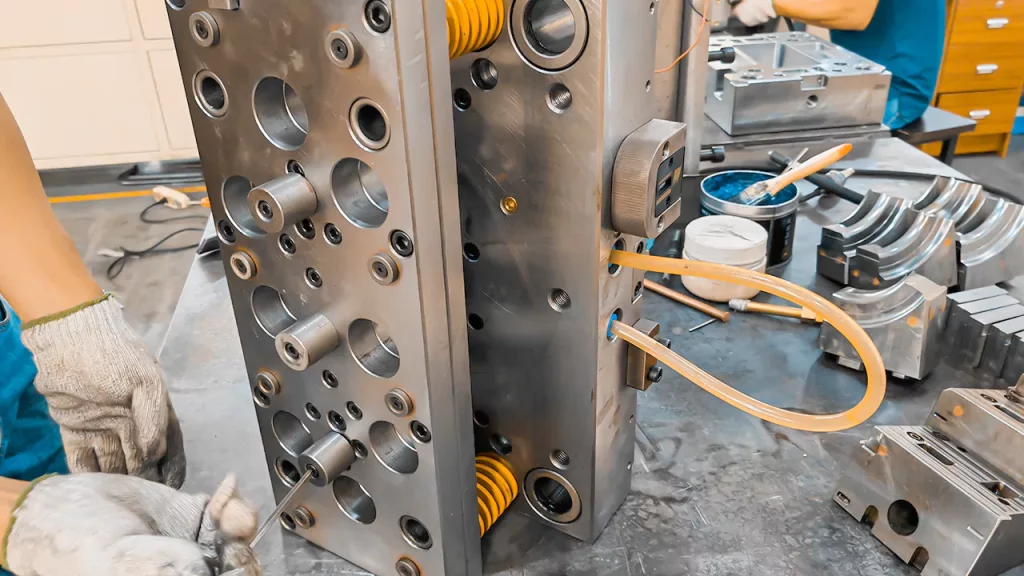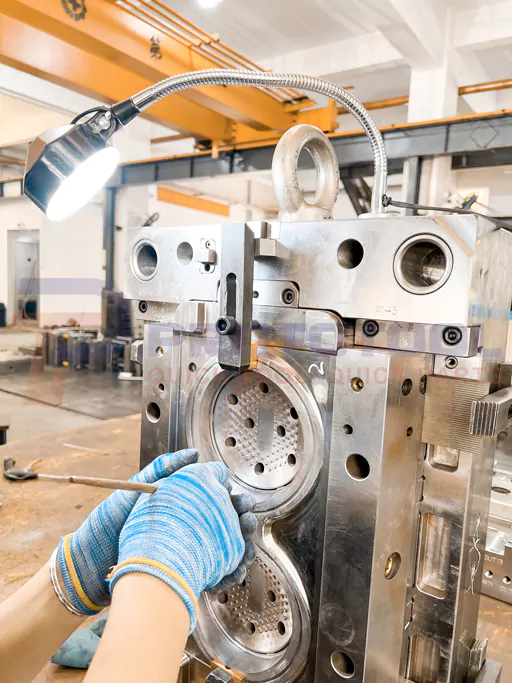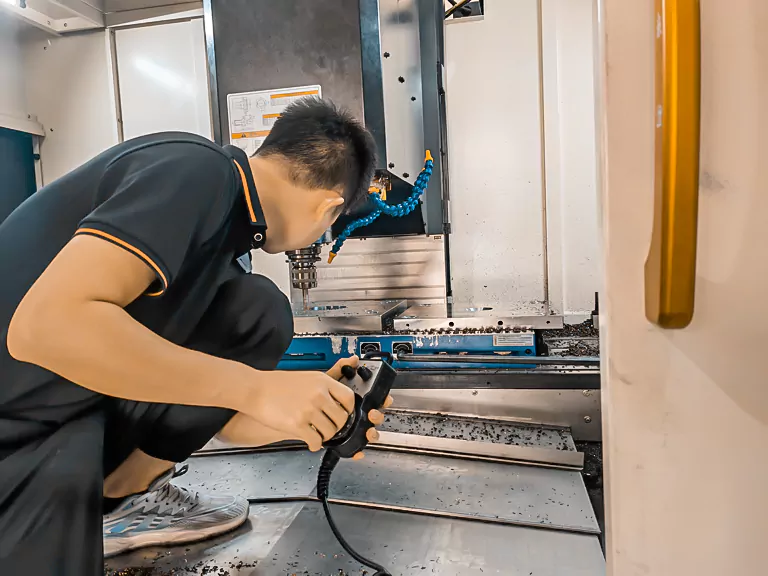During their daily operations, manufacturing sectors extensively use various instruments to ensure that they can produce a large number of items. They use a cutting tool and die, one of the instruments in their toolkit.
A machine tool can mold work pieces into a profile or shape as a cut or die. Cutting dies can also be referred to by their more common name, dies. The die’s shape and look are often modified to produce items with the corresponding shape successfully. This is done so that the die can more efficiently make products. The majority of cutting dies are made from sturdy, long-lasting metals. This ensures the smooth execution of manufacturing or machining processes without any issues.

If you are currently making the most of a die for your cutting processes, you need to ensure that it receives routine maintenance to make its useful life as long as possible. Below is a detailed guide to keeping your tool and die in efficient condition for years.
General Methods of Maintaining Die:
- Conduct Regular Upkeep
Regular inspection and cleaning of your die is an excellent preventative maintenance strategy that you may use. Because of the amount of work that must be done with this particular tool daily, some of its components may have already been subjected to a barrage of trash, dirt particles, and other materials. It is also possible that it has deteriorated portions that need to be refinished. During the inspection of your die, check if it is missing any components. Also, verify if it has an adequate or excessive amount of lubricant to address any issues promptly. You are responsible for determining whether it has broken or chipped components so qualified technicians can repair it as quickly as possible.
- Conducting Tool Investigation:
Besides cleaning every part of the tool and die, it’s also important to frequently investigate the condition of the die. Besides, other than cleaning, there can be minor defects that may be overlooked during regular usage of this cutting tool by workers. Neglecting these issues can cause further production/tool usage issues and provoke other parts of the die to face issues, leading to further defects.
Due to this reason, even when you ensure proper and frequent cleaning of the die, it may not help maintain the quality condition of the tool for long. What’s next? Replacing die tools more frequently can cause production delays and require additional investments. All this can, however, be avoided if you understand the common and frequently occurring defects in a die tool and investigate the tool every time you are working on its upkeep.
To maintain your production company’s workflow, promptly address any defects by replacing or repairing them.
- Loose fasteners
- Insufficient lubrication
- Excessive debris and buildup
- Worn or degraded parts or parts in need of refinishing
- Missing or broken components
- Fits, allowances, and clearances of die components

- Shims Added to the Die Sections:
You have to apply shims to the die sections to guarantee that the die station can continue to provide appropriate training. When carrying out this particular process, you must consider several considerations. First, you must ensure that the shims are not improperly positioned for your die to function correctly. You also need to check that the clearance around all of the elements used for fastenings, such as screws, dowels, and slug drop holes, is adequate. In order to prevent the emergence of brand-new problems, it is essential to use the appropriate quantity of shims. In the end, to keep the die quality high, you need to remove any burrs and dirt that may be on the shims before installing them.
- Sharpen Critical Surfaces of the Die
Like other machining tools, dies have a finite amount of time to be used effectively. Thankfully, die sets of great quality can be anticipated to last for years. Your die may only endure for a few months if it is not maintained properly and regularly. The presence of part defects such as burrs and broken edges is one theory to explain why a die has a shorter lifespan than expected in terms of its usefulness. The good news is that these flaws in the parts may be easily remedied by sharpening the die surfaces regularly. If you use the appropriate grinding wheel, the sharpening procedure can be completed successfully. In a similar vein, making use of the appropriate cutting shear can ensure an increase in the die’s service life.
Instructions for Tool and Die Maintenance for Engineers, Floor Managers, and Others
Industry professionals such as engineers and floor managers can verify the following components and processes as part of the general inspection and maintenance work they perform:
- Guideposts for galling, monitoring, and wearing on-die shoes
- Dies for black grease, slivers, and sludge
- Pilots for presence and length
- Documentation to facilitate speedy repairs
- The ratio of punch lengths to height
- Burrs, punch shear/brake lines, slivers, and tool markings should be checked on the final strips.
- Slugs to ensure adequate penetration and tightness, as well as variance

- For setup and condition, punch floats and pumps.
- Lifters are to be measured for height, timing, and other pertinent information.
- Chips and side galling die sections. Die sections.
- Inserts and forms for dies that measure height and timing, along with other pertinent information
- Clamps and toe straps for conditional wear and tear
- Pushers of in-die stocks for improved performance
- Wearable versions of stripper’s faces
- Procedures for both preventative and predictive maintenance, as well as activities for continuous improvement
There may be more items to check on that are stated on the die maintenance card instructions in addition to evaluating these die and equipment pieces. After the inspector has finished checking all of the required components, they are responsible for filling out the die maintenance card with the details of the work done, putting a tag on the tool that was inspected, and placing any orders for necessary replacement components.
The Importance: Is Tool and Die Maintenance Needed?
Being part of a professional manufacturing company comes with rules and requirements for maintaining the tool and die. However, not everyone understands the answer to ‘Why’. If you’re also unsure why frequent maintenance of tools is crucial, here are a few important factors that make tools maintenance compulsory:
Lasts Longer:
The most obvious advantage of maintaining your instruments is that they will serve you for a longer amount of time. Consider this: if you leave your tools out in the open, they will be harmed due to exposure to the elements. Rust is the most serious issue. We will expedite the degeneration of our instruments into old age if we do not take the required care to store them in humidity-protected areas and absorb excess moisture. We can lengthen the time our tools are valuable to us if we take proper care of them.
More Efficiency in Projects:
We briefly mentioned in the previous section that your saw may not always cut as well as it should. This is often the result of a saw that has not been properly maintained. If we take the time to maintain our equipment properly, the result of our labor will be favorable. For example, if you use a saw that is free of rust and has been sharpened to the optimum degree, it will go considerably faster and make much cleaner cuts. Sharpening and cleaning your tools before and after use is critical, regardless of time constraints. It ensures the production of a higher-quality result.
User’s Safety:
The fact that it assures the safety of the users takes us to our final point, which emphasizes the need for proper instrument maintenance to a tee. Routine inspections of the tools help reduce the possibility of someone using a dangerous item. This is true for all types of instruments, from electric power tools to wrenches, drill bits, and nails further down the line. You are responsible for keeping your tools in excellent working order, for your safety and for anybody else who may use them. Maintaining the condition of your tools is a vital step in protecting your own and others’ safety, which should always come first.
—
All in all, tool and die maintenance regularly can let you carry out fundamental activities without incident. However, if you still have any queries, contact us at Prototool.com.










